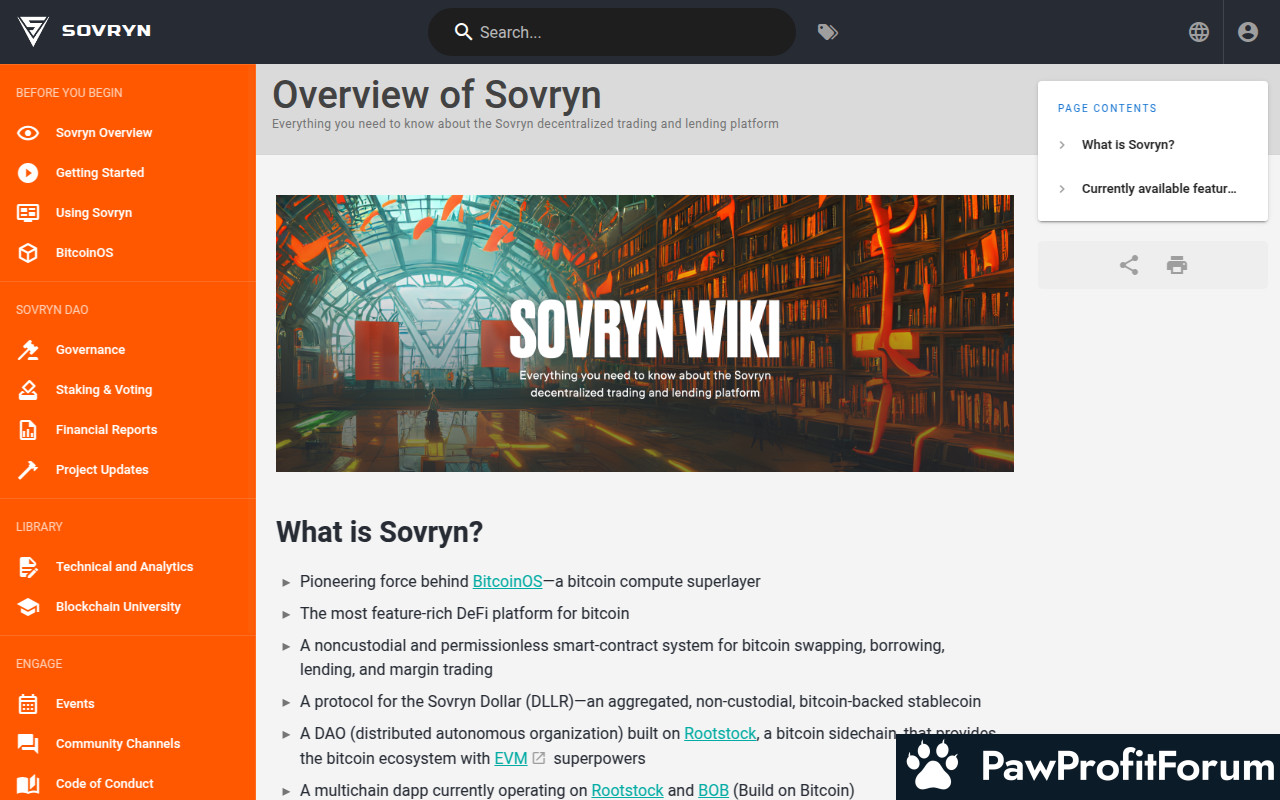Rootstock's native token RBTC is known as "Smart Bitcoin” and lets users use their BTC to interact with a range of services on the Rootstock Bitcoin layer 2.
WRBTC is an ERC20 token that wraps RBTC. Both are on the same network, RSK. This is accomplished using a smart contract. It is a 1:1 equivalent of RBTC.
WRBTC is to trade RBTC for other ERC-20 tokens on decentralized platforms. Because decentralized platforms running on RSK use smart contracts to facilitate trades directly between users, every user needs to have the same standardized format for every token they trade. This ensures tokens don’t get lost in translation.
The primary function of WRBTC is to enable the trading of RBTC for other ERC-20 tokens on decentralized platforms. This is crucial because decentralized exchanges on the RSK network rely on smart contracts to execute trades directly between users. By standardizing tokens in the ERC20 format, WRBTC ensures compatibility and prevents transactional errors.
Rootstock's integration with Bitcoin allows users to leverage their BTC holdings in a broader range of decentralized finance (DeFi) applications. This opens up opportunities for lending, borrowing, and other financial services that were traditionally limited to Ethereum-based assets. The RSK network's use of Bitcoin's hashing power also provides a robust security layer, making WRBTC a secure option for users seeking to diversify their crypto portfolio while maintaining Bitcoin's inherent security features.
The RSK network itself is built on a sidechain architecture, which means it runs parallel to the Bitcoin blockchain but remains connected to it. This connection is maintained through a process called "two-way peg," allowing users to transfer Bitcoin to the RSK network and receive an equivalent amount of RBTC. This mechanism ensures that the value remains consistent between the two networks, providing a bridge for Bitcoin holders to access smart contract capabilities.
Security is a paramount concern in blockchain technology, and RSK addresses this by using merged mining. Merged mining allows Bitcoin miners to simultaneously mine Bitcoin and RSK blocks without additional computational effort. This not only secures the RSK network with the same hash power that protects Bitcoin but also incentivizes miners by offering them additional rewards. This robust security model helps prevent attacks from bad actors, as any attempt to compromise the network would require an immense amount of computational power.
Smart contracts on RSK are executed using the Ethereum Virtual Machine (EVM), which means they are compatible with Ethereum's programming language, Solidity. This compatibility allows developers to port their Ethereum dApps to RSK with minimal changes, expanding the ecosystem of applications available to Bitcoin users. By leveraging the EVM, RSK can offer a wide range of decentralized services, from decentralized finance (DeFi) to non-fungible tokens (NFTs), all while benefiting from Bitcoin's security.
The use of WRBTC as an ERC20 token facilitates trading on decentralized platforms. These platforms rely on smart contracts to execute trades directly between users, eliminating the need for intermediaries. By adhering to the ERC20 standard, WRBTC ensures compatibility with a wide array of decentralized exchanges and applications, enabling seamless integration and reducing the risk of errors during transactions.
In addition to its technical features, the RSK network emphasizes decentralization and community involvement. The network is governed by a decentralized autonomous organization (DAO), which allows stakeholders to participate in decision-making processes. This governance model ensures that the development and direction of the network align with the interests of its users, fostering a collaborative environment for innovation.
The technology behind WRBTC exemplifies the potential of combining Bitcoin's security with Ethereum's programmability, offering users a versatile tool for engaging with the decentralized economy.
One of the primary applications of WRBTC is its role in facilitating transactions on the Rootstock network. By acting as a native token for gas fees, WRBTC allows users to pay for transaction costs, thereby enabling faster and more cost-effective interactions. This is particularly beneficial for those looking to leverage the Rootstock network's capabilities, such as improved scalability and reduced fees, compared to the Bitcoin network.
Additionally, WRBTC opens the door to a variety of DeFi applications. Users can participate in lending, borrowing, and yield farming activities, utilizing their Bitcoin holdings in a more versatile manner. By wrapping RBTC into WRBTC, users can access a broader range of financial services that are typically available within the Ethereum ecosystem, all while maintaining a connection to the Bitcoin network.
Furthermore, WRBTC supports the use of synthetic Bitcoin on the Rootstock network. This allows users to engage with Bitcoin-backed assets without the limitations of the original Bitcoin blockchain. The ability to use synthetic Bitcoin enhances the flexibility and functionality of Bitcoin, making it more adaptable to various financial applications.
In essence, WRBTC provides a practical solution for Bitcoin holders to interact with the growing world of decentralized finance, offering a bridge that connects the robust security of Bitcoin with the innovative potential of Ethereum-based applications.
WRBTC is an ERC20 token that wraps RBTC. Both are on the same network, RSK. This is accomplished using a smart contract. It is a 1:1 equivalent of RBTC.
WRBTC is to trade RBTC for other ERC-20 tokens on decentralized platforms. Because decentralized platforms running on RSK use smart contracts to facilitate trades directly between users, every user needs to have the same standardized format for every token they trade. This ensures tokens don’t get lost in translation.
What is Wrapped Rootstock Smart Bitcoin?
Wrapped Rootstock Smart Bitcoin (WRBTC) is a fascinating intersection of Bitcoin's security and Ethereum's flexibility. It operates on the Rootstock (RSK) network, a Bitcoin layer 2 solution, which enhances Bitcoin's capabilities by enabling smart contracts. WRBTC is an ERC20 token that wraps Rootstock's native token, RBTC, maintaining a 1:1 equivalency. This wrapping process is facilitated by smart contracts, ensuring seamless interaction with Ethereum's ecosystem.The primary function of WRBTC is to enable the trading of RBTC for other ERC-20 tokens on decentralized platforms. This is crucial because decentralized exchanges on the RSK network rely on smart contracts to execute trades directly between users. By standardizing tokens in the ERC20 format, WRBTC ensures compatibility and prevents transactional errors.
Rootstock's integration with Bitcoin allows users to leverage their BTC holdings in a broader range of decentralized finance (DeFi) applications. This opens up opportunities for lending, borrowing, and other financial services that were traditionally limited to Ethereum-based assets. The RSK network's use of Bitcoin's hashing power also provides a robust security layer, making WRBTC a secure option for users seeking to diversify their crypto portfolio while maintaining Bitcoin's inherent security features.
What is the technology behind Wrapped Rootstock Smart Bitcoin?
Wrapped Rootstock Smart Bitcoin (WRBTC) represents a fascinating intersection of Bitcoin's security with Ethereum's flexibility. At its core, WRBTC operates on the Rootstock (RSK) network, a Bitcoin layer 2 solution designed to bring smart contract functionality to Bitcoin. This is achieved by using Rootstock's native token, RBTC, which is pegged 1:1 with Bitcoin. WRBTC is an ERC20 token that wraps RBTC, allowing it to interact seamlessly with Ethereum-based decentralized applications (dApps).The RSK network itself is built on a sidechain architecture, which means it runs parallel to the Bitcoin blockchain but remains connected to it. This connection is maintained through a process called "two-way peg," allowing users to transfer Bitcoin to the RSK network and receive an equivalent amount of RBTC. This mechanism ensures that the value remains consistent between the two networks, providing a bridge for Bitcoin holders to access smart contract capabilities.
Security is a paramount concern in blockchain technology, and RSK addresses this by using merged mining. Merged mining allows Bitcoin miners to simultaneously mine Bitcoin and RSK blocks without additional computational effort. This not only secures the RSK network with the same hash power that protects Bitcoin but also incentivizes miners by offering them additional rewards. This robust security model helps prevent attacks from bad actors, as any attempt to compromise the network would require an immense amount of computational power.
Smart contracts on RSK are executed using the Ethereum Virtual Machine (EVM), which means they are compatible with Ethereum's programming language, Solidity. This compatibility allows developers to port their Ethereum dApps to RSK with minimal changes, expanding the ecosystem of applications available to Bitcoin users. By leveraging the EVM, RSK can offer a wide range of decentralized services, from decentralized finance (DeFi) to non-fungible tokens (NFTs), all while benefiting from Bitcoin's security.
The use of WRBTC as an ERC20 token facilitates trading on decentralized platforms. These platforms rely on smart contracts to execute trades directly between users, eliminating the need for intermediaries. By adhering to the ERC20 standard, WRBTC ensures compatibility with a wide array of decentralized exchanges and applications, enabling seamless integration and reducing the risk of errors during transactions.
In addition to its technical features, the RSK network emphasizes decentralization and community involvement. The network is governed by a decentralized autonomous organization (DAO), which allows stakeholders to participate in decision-making processes. This governance model ensures that the development and direction of the network align with the interests of its users, fostering a collaborative environment for innovation.
The technology behind WRBTC exemplifies the potential of combining Bitcoin's security with Ethereum's programmability, offering users a versatile tool for engaging with the decentralized economy.
What are the real-world applications of Wrapped Rootstock Smart Bitcoin?
Wrapped Rootstock Smart Bitcoin (WRBTC) serves as a bridge between Bitcoin and the Ethereum ecosystem, offering unique opportunities for users to engage with decentralized finance (DeFi) applications. As an ERC-20 token, WRBTC enables the seamless exchange of Rootstock's native token, RBTC, for other ERC-20 tokens on decentralized platforms. This interoperability is achieved through smart contracts, ensuring that trades are executed efficiently and securely.One of the primary applications of WRBTC is its role in facilitating transactions on the Rootstock network. By acting as a native token for gas fees, WRBTC allows users to pay for transaction costs, thereby enabling faster and more cost-effective interactions. This is particularly beneficial for those looking to leverage the Rootstock network's capabilities, such as improved scalability and reduced fees, compared to the Bitcoin network.
Additionally, WRBTC opens the door to a variety of DeFi applications. Users can participate in lending, borrowing, and yield farming activities, utilizing their Bitcoin holdings in a more versatile manner. By wrapping RBTC into WRBTC, users can access a broader range of financial services that are typically available within the Ethereum ecosystem, all while maintaining a connection to the Bitcoin network.
Furthermore, WRBTC supports the use of synthetic Bitcoin on the Rootstock network. This allows users to engage with Bitcoin-backed assets without the limitations of the original Bitcoin blockchain. The ability to use synthetic Bitcoin enhances the flexibility and functionality of Bitcoin, making it more adaptable to various financial applications.
In essence, WRBTC provides a practical solution for Bitcoin holders to interact with the growing world of decentralized finance, offering a bridge that connects the robust security of Bitcoin with the innovative potential of Ethereum-based applications.
Who are the founders of Wrapped Rootstock Smart Bitcoin?
Wrapped Rootstock Smart Bitcoin (WRBTC) emerges as a bridge between Bitcoin and Ethereum ecosystems, enabling seamless interaction with decentralized services. The masterminds behind this innovation are Adrian Eidelman, Sergio Demian Lerner, Gabriel Kurman, and Diego Gutierrez-Zaldivar. These founders are pivotal figures in the blockchain space, contributing to the development of Rootstock, a Bitcoin layer 2 solution. Their expertise spans various domains, from cryptography to financial technology, and they have been involved in multiple blockchain projects. Their work on Rootstock and WRBTC reflects a commitment to enhancing Bitcoin's utility through smart contract capabilities.| Website | wiki.sovryn.com/en/home |
| Contracts | 0x542f...7e677d |
| Explorers | explorer.rootstock.io/address/0x967f8799af07df1534d48a95a5c9febe92c53ae0 |



